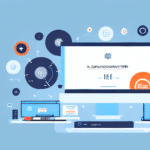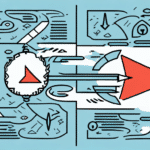Exploring the Cost Difference Between Customer Retention and Acquisition
In the competitive landscape of modern business, understanding the dynamics between customer acquisition and retention is crucial for sustainable growth and profitability. While both strategies are vital, they differ significantly in terms of costs involved and the approaches required. This article delves into the cost disparities between acquiring new customers and retaining existing ones, highlighting the factors that influence these expenses.
The Importance of Customer Retention
Customer retention plays a pivotal role in the long-term success of any business. Retaining existing customers is often more cost-effective than acquiring new ones. According to a Harvard Business Review study, increasing customer retention rates by 5% can lead to an increase in profits ranging from 25% to 95%. Loyal customers not only contribute to steady revenue streams but also act as brand advocates, promoting the business through word-of-mouth.
Strategies for Enhancing Customer Retention
- Exceptional Customer Service: Training staff to be responsive, friendly, and helpful ensures customers feel valued.
- Loyalty Programs: Implementing rewards programs can incentivize repeat business.
- Personalized Experiences: Tailoring promotions and communications to individual customer preferences fosters a deeper connection.
The Benefits of Customer Acquisition
While retention focuses on existing customers, customer acquisition seeks to attract new ones. This is essential for business growth, expanding market share, and diversifying the customer base. However, acquisition typically incurs higher costs due to investments in marketing campaigns, sales efforts, and lead generation initiatives.
Advantages of Expanding the Customer Base
- Increased Revenue: More customers can lead to higher sales volumes and profits.
- Market Diversification: A broader customer base reduces dependency on a single segment.
- Competitive Edge: Continual acquisition helps businesses stay ahead in the market.
Measuring Costs: Key Metrics
Understanding the financial aspects of acquisition and retention requires tracking specific metrics:
- Customer Lifetime Value (CLV): The total revenue a business can expect from a single customer account.
- Cost Per Acquisition (CPA): The total cost spent on acquiring a new customer.
- Cost Per Retention (CPR): The expenses involved in retaining an existing customer.
Monitoring these metrics enables businesses to evaluate the effectiveness of their strategies and make informed decisions to optimize spending.
Factors Influencing Acquisition and Retention Costs
Several elements impact the costs associated with acquiring and retaining customers:
- Industry Competition: Highly competitive industries often see higher acquisition costs.
- Business Size: Larger businesses may benefit from economies of scale, reducing per-unit costs.
- Product Quality: Superior products can enhance retention, lowering the need for extensive acquisition efforts.
- Marketing Strategies: Effective and targeted marketing can reduce both CPA and CPR.
Calculating Acquisition and Retention Costs
Determining the exact costs of acquiring and retaining customers involves aggregating all related expenses:
- Acquisition Costs: Include advertising, promotions, and sales commissions.
- Retention Costs: Encompass loyalty programs, customer service, and retention-focused marketing campaigns.
By comparing these costs against the revenue generated per customer, businesses can assess the profitability of their approaches and identify areas for improvement.
Reducing Acquisition and Retention Expenses through Effective Marketing
Strategic marketing can significantly lower the costs associated with both acquiring and retaining customers:
- Inbound Marketing: Attracts customers organically through valuable content and SEO strategies.
- Referral Programs: Encourage existing customers to refer new ones, often at a lower cost.
- Personalized Marketing: Tailored communications can enhance engagement and loyalty.
Implementing a robust Customer Relationship Management (CRM) system can aid in tracking customer interactions, enabling more efficient and personalized marketing efforts.
The Impact of Technology on Costs
Advancements in technology have transformed how businesses approach customer acquisition and retention:
- Marketing Automation: Streamlines repetitive tasks, reducing labor costs and increasing efficiency.
- Data Analytics: Provides insights into customer behavior, allowing for more targeted and effective strategies.
- Social Media Engagement: Facilitates direct interaction with customers, enhancing satisfaction and loyalty.
Leveraging these technologies can lead to more cost-effective and impactful marketing initiatives.
Case Studies: Successful Strategies in Action
Numerous companies have mastered the balance between acquisition and retention:
- Amazon: Utilizes personalized recommendations and its Prime loyalty program to retain customers.
- Dropbox: Employs referral marketing to attract new users cost-effectively.
- Starbucks: Offers a rewards program that not only encourages repeat purchases but also gathers valuable customer data for personalized marketing.
Balancing Acquisition and Retention for Optimal Growth
For sustained growth, businesses must find the right equilibrium between acquiring new customers and retaining existing ones. Overemphasis on acquisition can strain resources, while neglecting retention may lead to a declining customer base. A balanced approach ensures steady growth, reduced costs, and a loyal customer foundation.
Future Trends in Customer Acquisition and Retention
The landscape of customer acquisition and retention continues to evolve with emerging trends:
- Artificial Intelligence: Enhances personalization and predictive analytics in marketing efforts.
- Customer-Centric Models: Focus on delivering exceptional experiences tailored to individual needs.
- Omnichannel Engagement: Integrates multiple platforms to provide a seamless customer journey.
Staying abreast of these trends enables businesses to adapt and maintain a competitive edge in attracting and retaining customers.
Conclusion
Balancing customer acquisition and retention is fundamental to a business's growth and profitability. By understanding the cost implications and implementing strategic measures, companies can optimize their efforts to attract new customers while fostering loyalty among existing ones. Embracing technology and staying informed about industry trends will further enhance these strategies, ensuring long-term success in a dynamic marketplace.




















